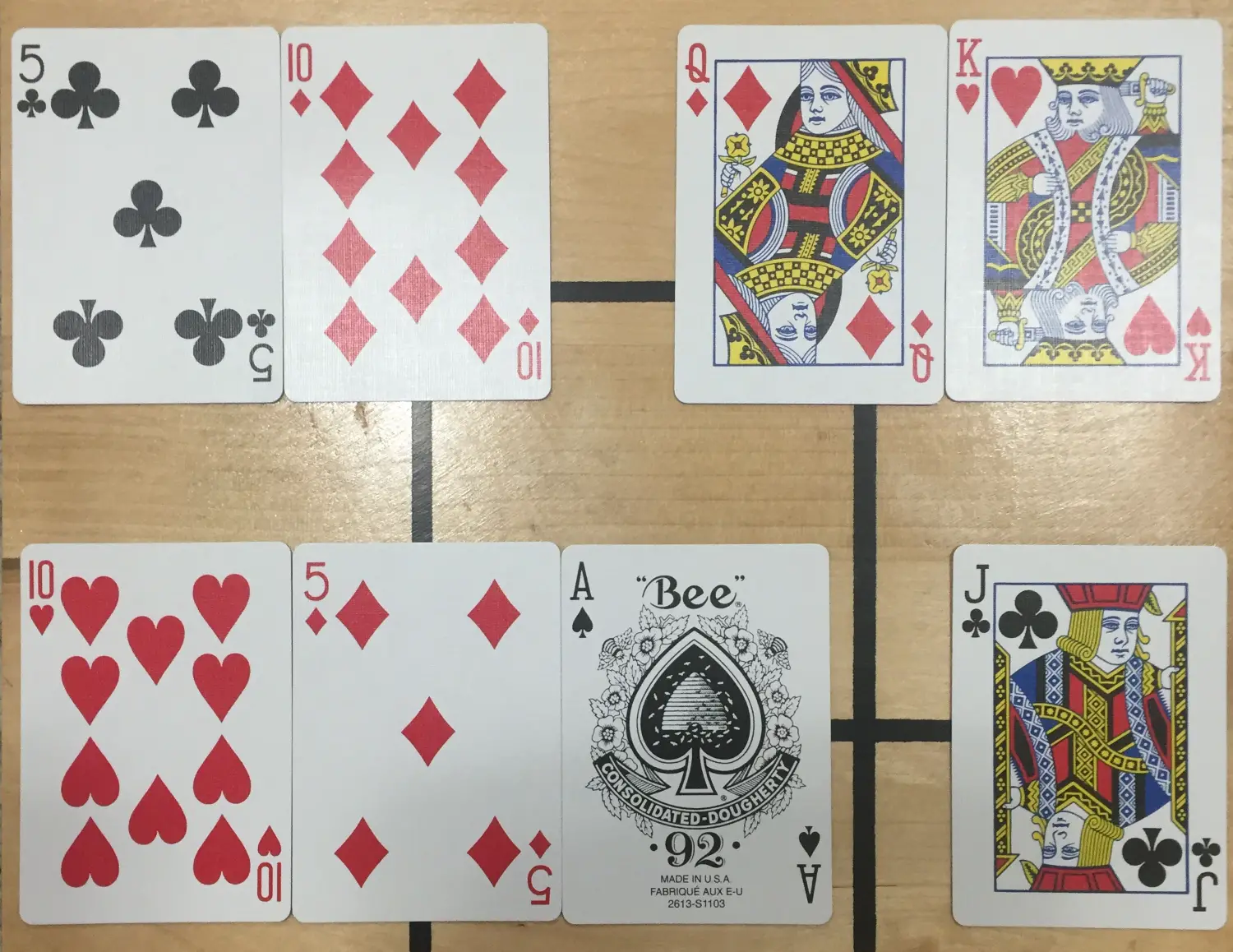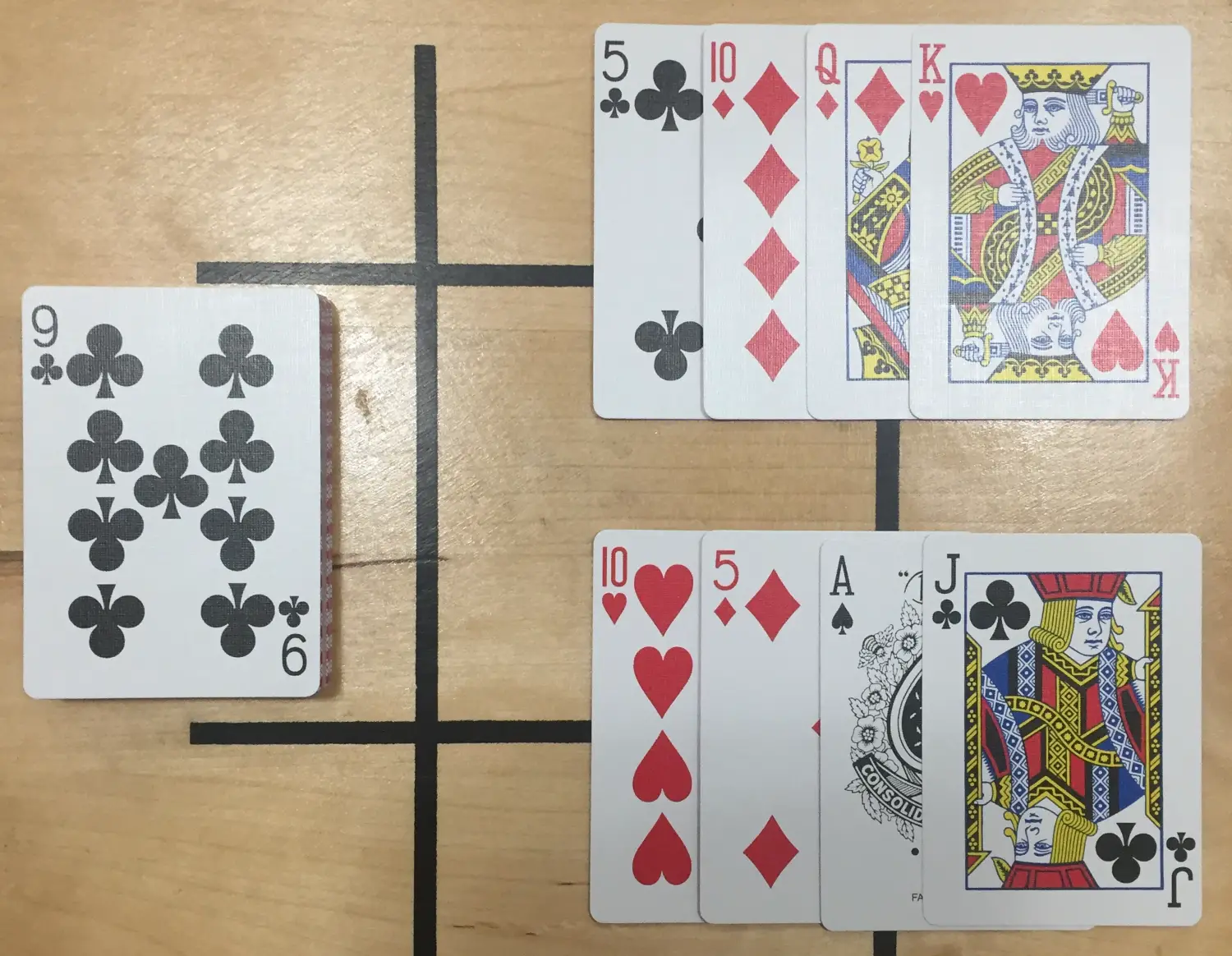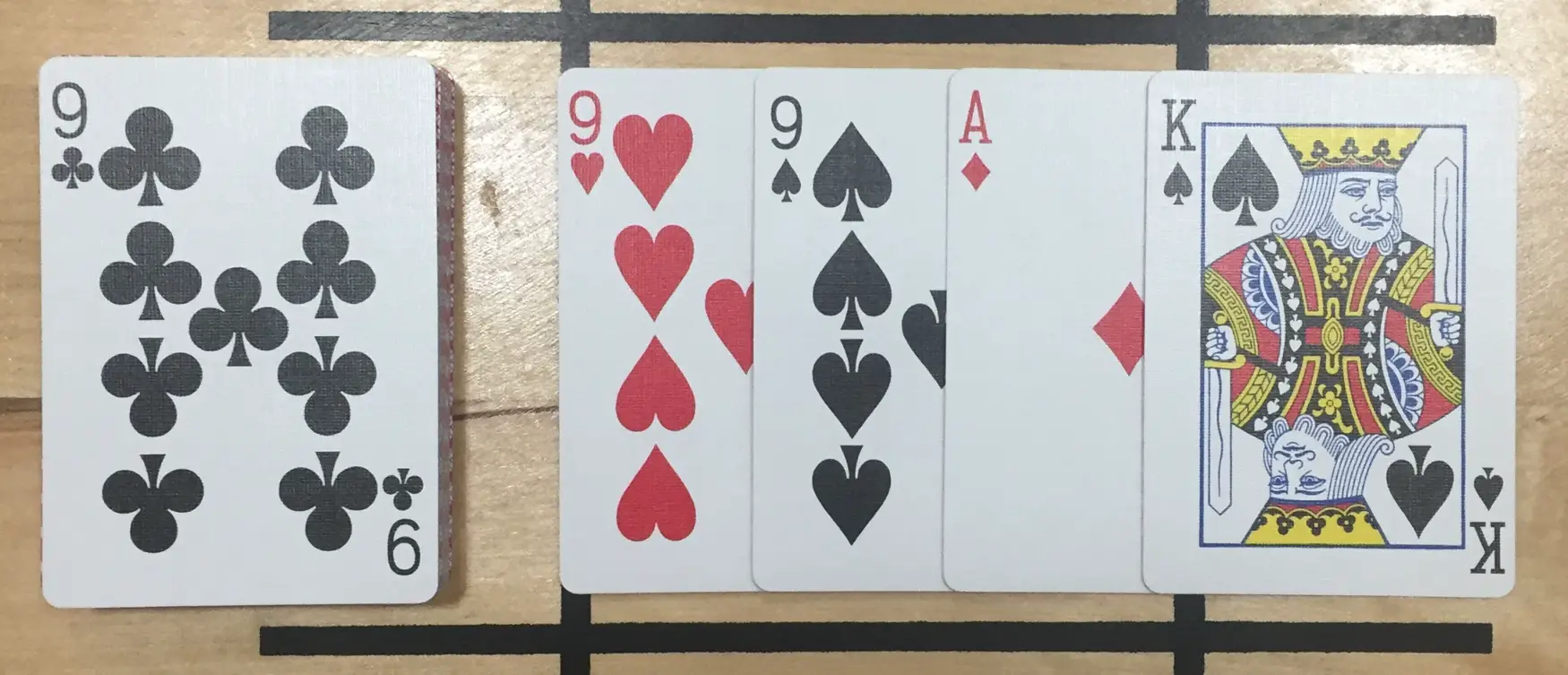Cribbage is not a simple card game and will sound a bit confusing at first. If you’re planning on starting it, reading a tutorial can be overwhelming.
The good news is that it’s still very manageable to learn, even if you’ve never been exposed to it before. It’s a popular game, which tells us it doesn’t take any unusual abilities to learn and play it.
How Should a Beginner Learn Cribbage?
I suggest you first read through this page a few times to get a basic understanding of the play. You’ll still be confused on many things, but it’s a good start.
Next, play a few games of cribbage against someone who knows it well (and who’ll explain things and not take it too seriously) or a computer opponent. Going through the process will make a lot of things much clearer. If playing against a computer, you can look up the answer to specific questions that arise during the game.
Finally, repeat the steps. Read through the rules again. They’ll be much easier to understand now that you have some context. Play a few more games. Although you might not be playing really well at this point, you’ll understand most of it.
Cribbage Rules and How to Play
The cards are counted at their face value from A-10, with the A counting 1, the 2 counting 2 and so on up to the 10 counting as 10. The face cards (J, Q, K) are also counted as 10. You’ll notice this makes a 10 count the most common card value in the deck at 16 cards (10, J, Q, & K times 4 suits).
During the game play (“pegging”) players alternate laying down cards and announcing the total value of the cards (first player lays 4♦ and says “four”, second lays K♠ and says “fourteen”). The highest the total can go is 31. When it reaches exactly 31 or as high as it can go without exceeding 31, the count resets to 0 and players continue laying cards and announcing the total.
Points
The first player to reach 121 points wins the game. Points are counted or “pegged” on the special cribbage scoreboard as soon as they are scored.
One of the pegs is advanced to the appropriate spot (to peg 5 if 5 points are scored). The next time points are pegged, the rear peg is advanced to the new spot (to peg 9 if 4 more points are scored). Cribbage boards are commonly oblong or shaped like the number 29. (Amazon)
Points are scored for pairs (6♣ & 6♥), three of a kind (6♣ 6♥ 6♠), four of a kind (6♣ 6♥ 6♠ 6♦), runs of at least 3 cards (straights or sequences like A, 2, 3) and combinations in the hand or crib that add up to 15 (9 & 6 or 5 & Q and many others). Pairs and 15s are worth 2 points and runs are worth the amount of cards in the run (3 card run is 3 points). Three of a kind is 6 points and four of a kind is 12 points.
During the play, points are also scored for bringing the total count to 15 & 31 (2 points each) and laying the last card before a reset or the end of the play (1 point if total isn’t 31).
Points are sometimes scored for:
- a Jack (a J starter card is 2 points for the dealer and holding the J of the same suit as the starter card is 1 point for the holder)
- a flush—at least 4 cards of the same suit (a 4-card flush in the hand is 4 points, a 5-card flush in the hand or crib including the starter card [see below] is 5 points).
The Deal
Players cut a card with the lowest card dealing first. Dealer shuffles, lets the opponent cut the deck, and deals 6 cards each.
Forming the Crib
Each player chooses 2 of their 6 cards to place face down in the dealer’s crib. The crib is an extra hand that the dealer can score points from a little later. You want to put helpful cards in the crib if it’s yours and unhelpful ones if it’s your opponent’s. Don’t give your opponent a 5 or a pair if you can help it. Otherwise, don’t worry too much about it yet. You’ll learn how to discard effectively with more experience.
The crib is kept face down next to the dealer. You’ll notice now that every hand (each player and the crib) has 4 cards in it.
The Starter Card
The non-dealer cuts the remainder of the cards and turns up the top one. This is the starter card. It won’t be used until later, so you don’t have to think about it during the game play.
If the starter card is a Jack, the dealer pegs 2 points.
The Play: Pegging
Players alternate laying down a card face up on the table and stating the count value, starting with the non-dealer. The running total cannot exceed 31. When it reaches 31 or as close to it as possible without going over, the count starts over at 0. The cards aren’t mixed together in the center because the players have to take their cards back for the next phase.
The goal is to score as many points as possible while preventing your opponent from scoring, if possible. As a beginner, I suggest you focus on scoring points and not think too much yet about strategy for preventing your opponent scoring. There’s enough to think about right now.
In this phase, points are scored for bringing the total to 15 and 31 (2 points each), pairing the previously laid card (2 points), making three of a kind (6 points), making four of a kind (12 points), creating a run of at least three cards (3 or more points), and laying the last card (1 point). Here’s a sample hand of play:

During the play, the count is also reset to 0 when a card can’t be played without exceeding 31. In the above example, if the bottom didn’t have an Ace they would have been unable to lay a card at that point and said “Go”, which means they can’t lay. Top wouldn’t have been able to play the Q or K because that would bring the count to 40. Top would say “Go” and bottom would score 1 point for the last card.
After the Play: The Show
When both players have run out of cards, the next phase—the show—starts. The cards that each player held are now scored in conjunction with the starter card from earlier. This is why the cards don’t get combined in the middle during play like they do in many other games. The non-dealer counts their points first.
Points are earned for:
- Combinations totaling 15 (2 points)
- Pairs (2 points)
- Three of a kind (6 points)
- Four of a kind (12 points)
- Sequences of 3, 4 or 5 cards (3, 4 or 5 points)
- Flushes of 4 cards in the hand or 5 cards including the starter (4 or 5 points)
- Holding the Jack of the starter suit (1 point). Note that turning up a Jack is scored as soon as it happens earlier in the game.
Every different scoring combination counts—as long as one card changes it’s a new combination that gets points. For example, if you hold 2, 3, K, K and the starter card is a Q the 2 & 3 combine with each K and the Q to make 15 each time. These combinations totaling 15 are all different. The 2 & 3 are the same but the Kings (two different suits) and Queen make them unique. Each total of 15 scores 2 points so you get 6 points from this holding. You also score 2 points for the pair of Kings, bringing your total score for this phase to 8 points.
The non-dealer states their scoring combinations and point value and then pegs them on the scoreboard.
The dealer now counts the points in their hand the same way and pegs them on the board. When this is finished we move to the next phase. Here’s what the show would look like from the previous picture:

Scoring the Crib
The dealer also gets any points that are in the crib—the four cards (two from each player) that were put aside face down after the deal.
The dealer turns them over and scores them just like he did with his regular hand, in combination with the starter card. He identifies the scoring combinations and pegs the points. Here’s a sample crib from the previously pictured hand:

This ends the round. The non-dealer now deals the next hand.
Cribbage Overview
Now that you have an overview of the game play and scoring, here are a few things to notice:
- When the crib is yours, you can send good cards to it—a 5, a pair, connected cards and others that you’ll learn with experience.
- When the crib is your opponent’s, you try to send poor cards to it—cards unlikely to combine for 15 or any other points.
- The cards you keep end up getting scored directly for you after the play, so it’s good to keep as many scoring combinations in your hand as you can. In general, don’t ruin your hand for the sake of sending worse cards to your opponent’s crib.
- The cards you keep get scored in combination with the starter card. Of course, you don’t know what that card will be but you can try to keep cards that will score with multiple starter cards. You’ll get a better sense for this with experience. For now, just be aware that the most common starter card will have a value of 10 because 31% of the deck is counted as 10 (four suits of 10, J, Q & K—16 out of 52).